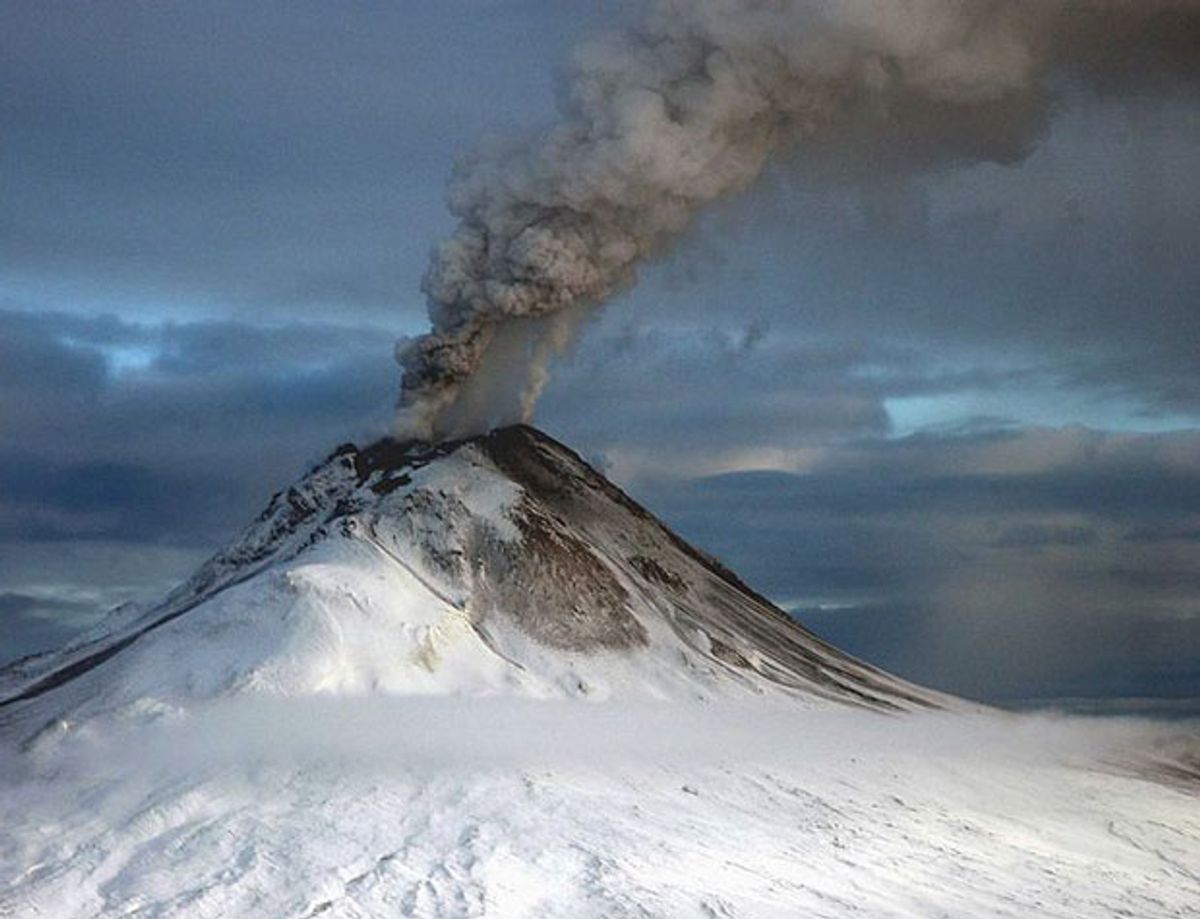When it comes to pollution press coverage, CO2 beats SO2 hands down. (A quick Google search for “carbon dioxide” and “pollution” found 18.2 million hits; “sulfur dioxide” and “pollution” turned up 4.1 million.) Still, sulfur dioxide remains a major cause of acid rain. And sulfuric acid droplets in the stratospheric aerosol layer moderate greenhouse warming by reflecting solar radiation back into space.
In the past, climatologists focused on the roles played by industry or by colossal volcanic eruptions—those with Volcanic Explosivity Indices of 6 or above, like Mt. Pinatubo in 1991 (VEI 6), Krakatoa in 1883 (VEI 6), and Tambora in 1815 (VEI 7). Eruptions like these can reduce global temperatures by one or two degrees Celsius over a period of years. (See Simon Winchester’s 2003 book Krakatoa or William and Nicholas Klingaman’s just-published The Year without Summer, about Tambora’s aftermath.)
Atmospheric sulfur dioxide undeniably comes from both human and geological sources. The open question is, which source predominates? Many environmentalists point accusing fingers at industrial activity—fossil-fuel-fired power plants, factories, and internal combustion vehicles—especially in India and China, which have increased their SO2 emissions some 60 percent over the past decade.
Researchers from the University of Colorado at Boulder (collaborating with geophysicists from the U.S. National Oceanic and Atmospheric Administration, MIT, and NASA) tried to trace the origins of sulfur dioxide by running a series of simulations testing a variety of combinations of man-made and volcanic sources. They wanted to see which mix produces the pattern of sulfur dioxide distribution and “aerosol optical depth” (AOD, a gauge of the atmosphere’s opacity) that most closely matches reality. Overall, AOD has increased by between 4 percent and 10 percent per year since 2000.
In an upcoming issue of Geophysical Research Letters, Ryan R. Neely III and his collaborators report how they mated two models—a global climate model and an aerosol microphysical model—and fed them time-and-place data for industrial production and volcanic explosions recorded from 2000 to 2010. In a departure from the usual volcanic analysis, though, the Boulder team emphasized moderate volcanic eruptions—those hurling a megaton or less of SO2 into the lower stratosphere—rather than the much rarer large eruptions that catapult many megatons of sulfur and ash into the heavens.
They found that models based only on volcano eruptions (with the addition of aerosols from the massive 2009 fire in Victoria, Australia) matched the satellite-observed levels more closely than any based on anthropogenic sources. Even when the modelers boosted man-made SO2 inputs by an order of magnitude, they didn’t come close to matching the actual curves: “The results of these simulations unambiguously show that moderate volcanic eruptions are the main drivers of stratospheric aerosol variability from 2000 to 2010….”
By repeating runs while suppressing some inputs, the researchers estimated that all human-generated sulfur dioxide worldwide accounts for about half of current aerosol optical depth. The component attributable specifically to increases in Chinese and Indian emissions, though, is small—amounting to about a 4 percent increase over the five years from 2000 to 2005.
Their simulations also indicate that the sulfur dioxide blasted into the upper atmosphere exerts a significant global-cooling influence, in effect cancelling out about 25 percent of the worldwide warming that would otherwise have resulted from the accumulation of carbon dioxide and other greenhouse gases.
Keen Eye for Industrial Emissions
Images: U.S. Geological Survey; Universidad Carlos III de Madrid
Douglas McCormick is a freelance science writer and recovering entrepreneur. He has been chief editor of Nature Biotechnology, Pharmaceutical Technology, and Biotechniques.




